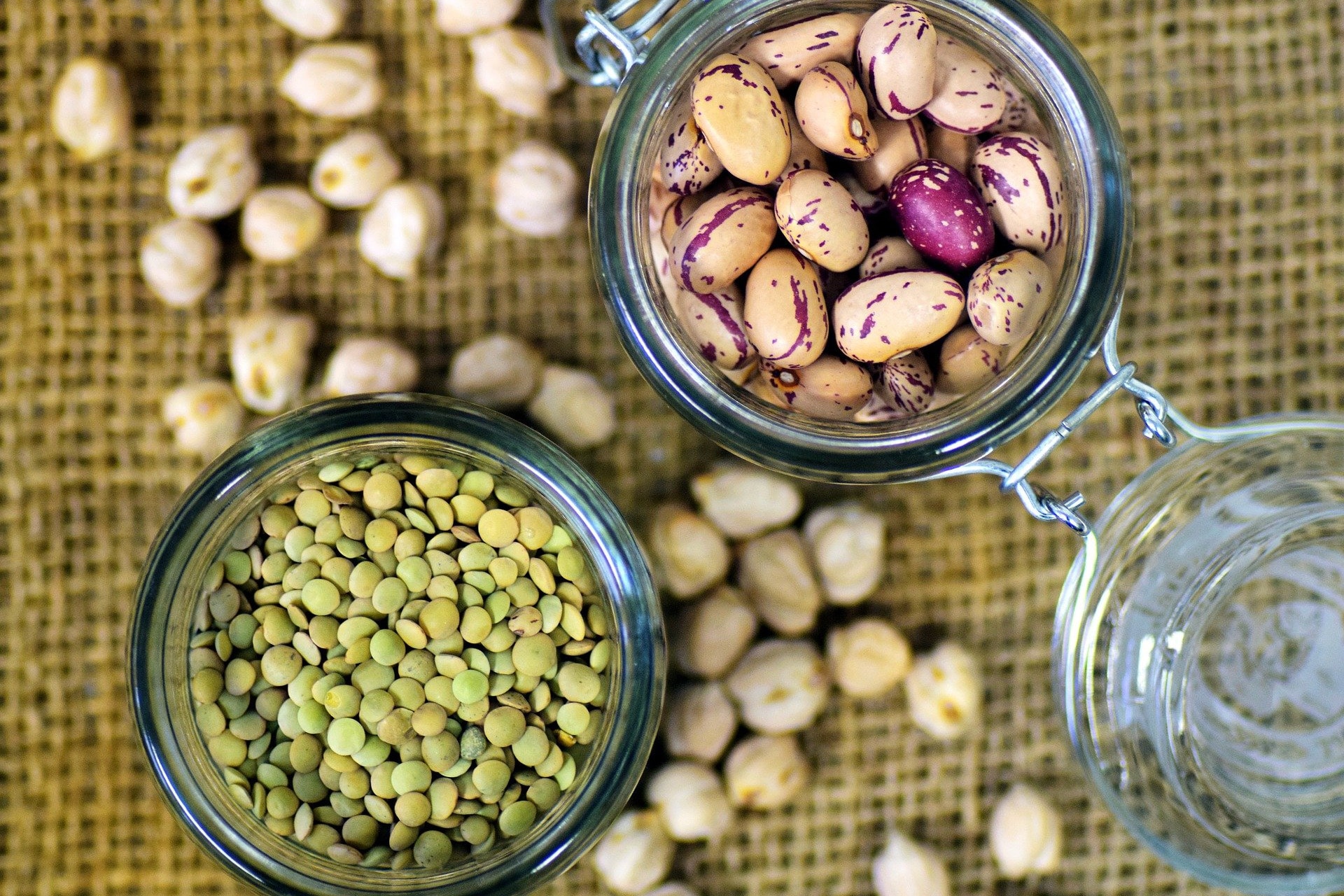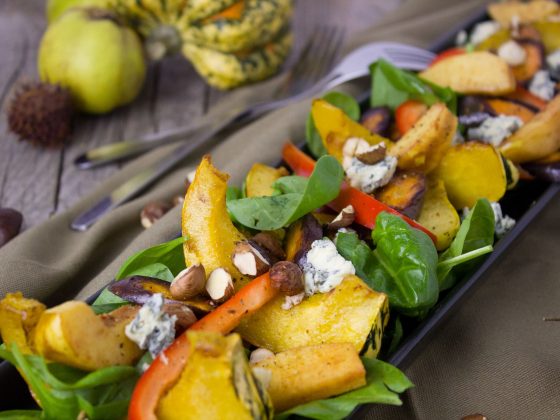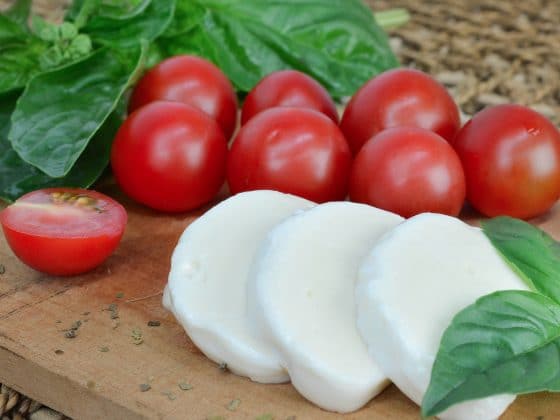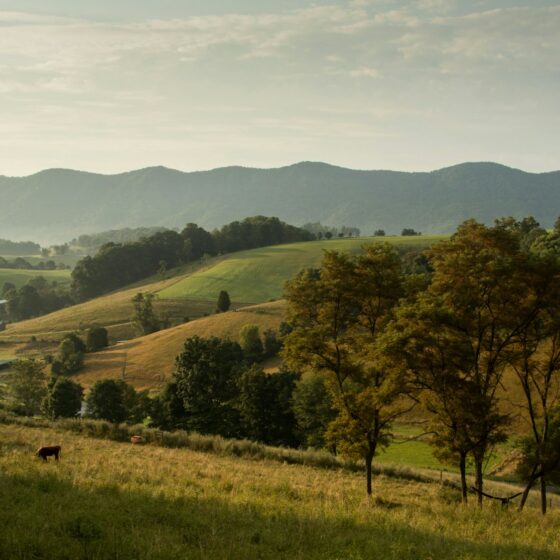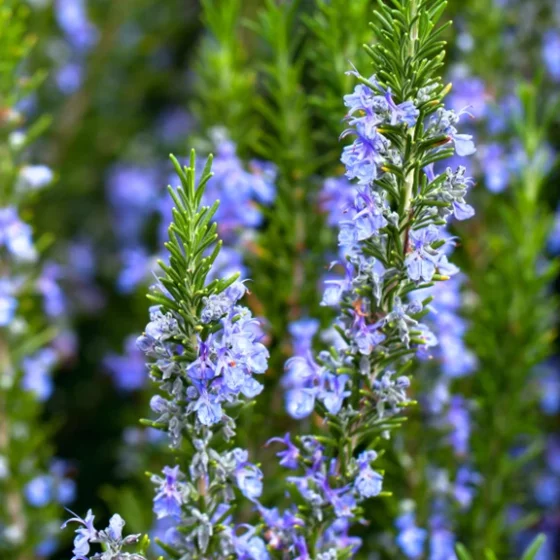Are you tired of those worried faces when you tell someone that you’re a vegan? Well, you’re not alone!
This is exactly why we’ve created this guide to tackle one of their primary concerns — vegan protein sources. Knowing where to get vegan protein can not only help you during debates but can also help you flex your vegan muscles.
In this article, we’ll uncover a few simple tactics to help you take better care of yourself and get all the benefits of a vegan diet without the downsides.
To find out more about this topic, just keep on reading!
The Truth About Vegan Protein Sources
A typical vegan meal plan is seriously lacking in protein. At least, this is what we’ve been told for ages — a statement that couldn’t be farther from the truth! Namely, plant-based meals can be as rich in quality protein as those of meat-eating diets. Yet, the trick is to recognize the right kind of ingredients.
That said, there is quite a lot to consider when it comes to protein from plants, so let’s begin!
What Are Proteins?
The first step to using plant foods high in protein is understanding what protein is and where it comes from.
In short, proteins are biomolecules that are essential for the proper functioning of our bodies. Together with fats and carbohydrates, proteins are one of the macronutrients of the human diet and are responsible for the growth and maintenance of tissues and muscles.
In fact, proteins make up 20% to 30% of our total body weight. Moreover, proteins make out the structure of each of our cells and are mostly found in our muscles, skin, hair, nails, and tendons.
What Are Amino Acids?
Simply put, amino acids are what proteins are made of. And when it comes to vegan sources of protein, it’s important to note that these differ from the ones found in meat and animal products.
What’s more, there are a total of 22 amino acids and proteins are just different combinations of these. The human body is capable of producing most of these, and they are called non-essential amino acids.
However, for the remaining nine amino acids, we need to rely on external sources as they can’t be produced in the human body. These are also known as essential amino acids.
The Many Roles of Protein in the Body
Whether animal-based or vegan, protein is absolutely crucial for the proper functioning of our bodies. Namely, 10,000 different proteins help regulate our metabolism, immunity, movement, cognition, and digestion.
How do they manage all of that?
Well, hormones, enzymes, hemoglobin, neurotransmitters, and antibodies are all proteins.
This is why including protein-rich food in vegan meals is of utmost importance. Here’s a complete list of what proteins make possible:
- They facilitate all metabolic processes such as digestion, the burning of calories, and the transport of oxygen to cells.
- They are the building blocks of our bodies and are responsible for the growth, structure, and repair of damaged tissues (healing of wounds and broken bones).
- They help us fight off infections and are a part of our immune system.
- As hormones, they regulate our metabolism.
- They boost our mood and promote cognition.
- They regulate the balance of fluids in the body.
- They enable us to move by allowing the contraction of our muscles.
- They provide a long-lasting source of energy.
What Is Plant Protein?
Plant protein or plant-based proteins are proteins derived from plants. Unlike what outdated sources claim, plants contain all the essential amino acids that our bodies need.
That said, there are few easily surmountable differences between plant-based and meat-based proteins that go in favor of the latter:
- Essential amino acid distribution is different in plants.
- Plant proteins are less digestible than animal proteins.
- Protein from plants may lack important micronutrients like heme iron and vitamin B12.
Overcoming Plant Protein Disadvantages
Vegan protein food that is based on the same, limited ingredients may contain too few essential amino acids.
For example, as one research review suggests, grains lack the essential amino acid lysine, whereas legumes are lower in methionine and cysteine.
So a complete protein formula would include both food groups: grains and nuts/legumes. For instance, toasting a whole-grain bread peanut butter sandwich is an adequate protein meal.
And if you lack the creativity for rich and flavorful vegan dishes, you can get your inspiration from meal delivery menus like that of Purple Carrot, and similar, that are exclusively vegan.
That said, vegan protein options are more difficult to absorb by the human intestine as they are enveloped in plant fibers and other non-digestible plant compounds. Yet, this is easily dealt with as you just need to consume more of them.
As for the essential vitamins and minerals found in animal meats, you can obtain those through other plant-based sources and supplements.
Advantages of Vegan Protein
Studies have shown that plant-based diets lead to fewer CVDs, diabetes, and other chronic illnesses. Indeed, veggie sources of protein are healthier than their meat-based counterparts due to:
- Not containing phosphates and other cancer-inducing chemicals of processed red meat.
- Being low on saturated fats (bad fats) and cholesterol.
How Much Protein Do Vegans Need?
If you want to meet your daily protein requirements, you need to do the math first. Namely, the recommended daily protein intake depends mostly on your:
- age
- weight
- gender
- health condition
- physical activity
Physical Activity
Physically active vegans need bigger portions of high-protein vegan meals compared to sedentary ones. The same goes for other food styles — omnivores, semi-vegetarians, and vegetarians.
Weight
As per the National Academy of Medicine, a sedentary adult needs at least 0.25oz of protein per 20 lbs of their body weight. Meaning, someone weighing 200 lbs will need about 2.5oz per day. Therefore, heavier individuals will require more plant-based foods high in protein if they are vegan.
Age
As one study shows, seniors need more protein than young people as they produce fewer non-essential amino acids due to age.
Gender
Gender differences in protein requirements also exist. For one, women have reduced muscle mass and slower muscular metabolism compared to men. As a result, they require less protein than men.
Also, despite a common misconception that men should avoid soy as a vegan protein source due to hormonal disturbances, a recent study proved that there’s no correlation between the two.
Health Conditions
Certain health conditions need to be taken into consideration as well when calculating daily protein needs. For example, chronic kidney disease (CKD) patients need to reduce their protein intake.
Protein Needs of Vegan vs. Meat-Eaters
As previously mentioned, animal protein is more easily digested. Hence, the daily protein recommendations for vegans are much higher than those of omnivores.
Therefore, it’s not uncommon to see a high-protein vegan breakfast, lunch, and dinner.
Furthermore, the Dietary Reference Intake (DRI) for healthy, sedentary adults younger than 65 are:
Vegans
- men — 2.22oz per day
- women — 1.83oz per day
Omnivores
- men — 1.97oz per day
- women — 1.62oz per day
What Happens If You Don’t Eat Enough Protein?
Turning to fats and sugars instead of vegan foods high in protein is a common mistake among vegan beginners. Luckily, severe protein deficiency among vegans is quite rare, but it can lead to serious health issues if it does occur.
Severe Protein Deficiency Symptoms
Appearance:
- skin, hair, and nail problems
- edema or swelling of your hands, feet, and abdomen
- weight gain
Mood:
- irritability
- mood swings
- lethargy
- depression
Energy levels:
- lack of energy
- diminished physical strength
Susceptibility to infections:
- slow-healing injuries
- suppressed immunity
Health conditions:
- fatty liver
- anemia
- bone fractures
- kwashiorkor (in children)
Mild and Moderate Protein Deficiency Symptoms
Eating adequate amounts of protein for vegans entails highly concentrated, diverse foods consumed in larger quantities. If these are not met, you can become protein-deficient and experience the following health issues:
- lethargy and fatigue
- depression and anxiety
- low bodybuilding performance
- higher blood sugar levels
- high triglyceride and cholesterol levels
- thinning of the hair
- brittle nails
- dry skin
So far, studies haven’t detected any noticeable protein deficiency in vegans. Yet, according to a study from the Journal of Nutrition, Health & Ageing, one in every three adults over 50 has lower than optimal protein intake.
How to get protein as a vegan?
There are plenty of plant-based foods that can help you get the required daily protein. But what you should adopt is making your meals as versatile as possible with plenty of protein-rich ingredients.
To do it correctly, you can start off by copying food delivery services such as Green Chef, Factor 75, and others that offer strictly vegan menus.
That said, the list of protein-rich vegan food is long, so it shouldn’t be hard for you to find healthy plant-based alternatives.
Best Vegan Protein Sources
Unlike meats, vegan foods that contain high quantities of protein per gram are not necessarily the best source of protein. Instead, plants that have the so-called “complete protein” are far better options.
Namely, a complete protein is a protein that has reasonable quantities of all essential amino acids.
Below, you’ll find a list of foods both rich in protein and those that are considered a good source of complete protein.
Grains
Unless you’re following a gluten-free diet, grains, especially whole grains, are the perfect ingredient for vegan protein breakfasts.
Overall, whole grains are a great source of both protein and fiber. In fact, they should provide about 12% of your daily requirements.
In addition, they’re packed with various B vitamins, antioxidants, and trace minerals (iron, zinc, copper, and magnesium). Here’s a full list of the amount of protein contained per 3.5oz of the following foods:
- oats (0.6oz)
- amaranth (0.5oz, complete protein)
- semolina (0.46oz)
- teff (0.43oz)
- sorghum (0.38oz)
- wheat flour (0.35oz)
- kamut (0.35oz)
- finger millet (0.26oz)
- cornmeal (0.25oz)
- cooked spelt (0.21oz)
- chia seeds (0.21oz)
- farro (0.21oz)
- buckwheat (0.18oz, complete protein)
- quinoa (0.15oz, complete protein)
Nuts
Nuts are the best high-protein vegan snacks. Still, be careful — they are also high in calories. This is mainly due to their high fat content, especially monounsaturated fats (good fats), omega-3s, and omega-6s.
The nutritional value of nuts makes them convenient energy boosters — a quality that is well recognized among some of the best snack subscription boxes.
Nuts include:
- almonds (0.75oz)
- pistachios (0.71oz)
- walnuts (0.53oz)
- hazelnuts (0.53oz)
- pecans (0.38oz)
- macadamia nuts (0.28oz)
Seeds
All vegan protein foods feature seeds, and for good reason too! Namely, besides being packed with proteins and good fats, they are also rich in antioxidants, vitamins, and fiber. What’s more, they are an excellent source of magnesium, copper, calcium, and zinc.
Seeds include:
- sunflower seeds (0.74oz)
- pumpkin seeds (0.67oz)
- flaxseed (0.63oz)
- cashew seeds (0.63oz)
- sesame seeds (0.63oz )
- safflower seeds (0.57oz)
- pine nuts (0.49oz)
- brazil nuts (0.49oz )
- watermelon seeds (0.28oz)
- hemp seed (0.22oz, complete protein)
- chia seeds (0.21oz, complete protein)
- cooked wild rice (0.14oz, complete protein)
Legumes
Whole, vegan high-protein food is almost synonymous with legumes. They are the plant equivalent of meat when it comes to protein and are used in many plant-based recipes.
However, unlike meats, legumes don’t contain any cholesterol or unhealthy fats. Hence, eating a lot of legumes brings nothing but health benefits.
Their only downside is that some are quite difficult to digest. But using a good quality slow cooker can help you make them more gut-friendly and tasty without losing any precious nutrients in the process.
Besides having a crucial role in a high-protein vegan diet, legumes also provide much-needed minerals such as iron, magnesium, potassium, and others.
- peanuts (0.92oz)
- cooked soybeans (0.39oz, complete protein)
- cooked chickpeas (0.32oz)
- cooked lentils (0.32oz)
- cooked kidney beans (0.32oz)
- pinto beans (0.32oz)
- boiled black beans (0.31oz)
- split peas (0.29oz)
- boiled fava beans (0.28oz)
- navy beans (0.28oz)
- lima beans (0.28oz)
- boiled mung beans (0.25oz)
- cannellini beans (0.21oz)
Fruits
Fruits are not usually considered good sources of protein for a vegan diet, but they can still help increase your daily protein intake. In addition, fruits are rich in antioxidants, vitamins, minerals, and fibers.
Here’s a list of protein-rich fruits:
- guava (0.09oz)
- avocado (0.07oz)
- Jackfruit (0.06oz)
- apricot (0.05oz)
- blackberries (0.05oz)
- raspberries (0.04oz)
- banana (0.04oz)
Seaweeds
Many studies are dedicated to vegan, high in protein foods coming from the deep blue sea, which is well justified! Seaweeds are simply incredible protein sources. In fact, almost half (47%) of their dry mass is made out of proteins.
Furthermore, their unique nutritional qualities and their affordable price make them an excellent source of protein.
- spirulina (2oz, complete protein)
- chlorella (1.76oz–2.29oz, complete protein)
- nori (0.2oz, complete protein)
Other Protein Sources for Vegans from Vegetables
- alfalfa sprouts (0.14oz)
- brussels sprouts (0.12oz)
- artichokes (0.12oz)
- sweet corn (0.11oz)
- collard greens (0.1oz)
- mustard greens (0.1oz)
- spinach (0.1oz)
- broccoli (0.98oz)
- watercress (0.08oz)
- asparagus (0.08oz)
Fungi
- mushrooms (0.11oz, complete protein)
Processed High-Protein Vegan Foods
- Textured Vegetable Protein (TVP) (1.82oz)
- nutritional yeast (1.64oz, complete protein)
- peanut butter (0.88oz, complete protein)
- Ezekiel bread (0.52oz, complete protein)
- hummus (0.28oz, complete protein)
- mustard (0.16oz)
Soy Products
Processed soy products are cheap, tasty, and high-quality protein sources. Besides proteins, soy products also contain antioxidants, fiber, minerals, and vitamins.
Soy products high in protein include:
- seitan (0.88oz)
- tempeh (0.67oz, complete protein)
- teff (0.43oz)
- edamame (0.39oz, complete protein)
- tofu (0.28oz, complete protein)
- soy milk (0.12oz, complete protein)
Protein Powders
The best proteins for a vegan are naturally sourced. Still, there are protein supplements for vegans for those with a fast lifestyle — namely, protein powders. These plant-based protein powders are usually made out of soy, sunflower, hemp, pea, pumpkin seed, sacha inchi, brown rice, chia, or different blends.
How to Improve Your Protein Intake
No matter how many high-protein foods a vegan meal contains, it all comes down to how well you absorb them. Here are a few tips on how to do just that:
- Eat fruit before your protein-rich meal — Acidic foods like fruits and fruit juices help the stomach digest protein efficiently. Acids reduce proteins to their building blocks (amino acids), which get absorbed in our gut.
- Eat your plant protein foods before a workout — Regular workouts stimulate amino acid absorption.
- Mix your protein with high-quality carbohydrates — Insulin helps the body absorb amino acids, and sugars spike it up. Hence, it’s a good idea to consume the more healthier option — complex carbohydrates.
What Happens If You Eat Too Much Protein?
Unlike meat-derived protein, the risks of overeating protein supplements and high protein plant-based foods are mild and rare. They include:
- weight gain
- ammoniac breath — ammonia is the by-product of protein degradation and is exalted, which is why it can cause bad breath and can get worse if your diet is low on carbs as well
- constipation or diarrhea
- dehydration
- worsening of chronic kidney disease
Bottom Line
The vegan journey is not always an easy one. Yet, knowing the truth behind vegan protein sources can help remove common misconceptions and mistakes.
All in all, reaching for diverse rather than gigantic meals will help you stay on track with your weight, look, and wellbeing. That said, you don’t need to constantly calculate how much protein you’re taking. If you’re mixing grains, beans, and nuts every day, you’re probably getting more than enough.
FAQs
What is plant-based protein?
Put simply, plant-based protein is a digestible protein that we get from eating vegetables, fruits, and other plant sources, including seaweed. Plants can be a rich source of protein even though we’re accustomed to associating proteins with animal meat and dairy.
Proteins are one of the three essential macronutrients in our diets (together with carbs and fats). They are critical to the functioning, growth, and repair of our bodies.
What is the highest quality plant protein source?
High-quality protein means high content of “complete protein” — in other words, protein containing all essential amino acids (leucine, lysine, methionine, isoleucine, phenylalanine, tryptophan, threonine, valine, and histidine).
The top 10 list of vegan high-protein foods include:
- spirulina
- chlorella
- nutritional yeast
- peanut butter
- soy and soy products
- quinoa
- buckwheat
- amaranth
- hemp seed
- chia seeds
What is the difference between animal protein and plant protein?
The debate between animal-based and plant-based proteins is actually founded on what accompanies proteins since plant and animal proteins are not all that different.
- Plant-based foods rich in protein are not as caloric as meats and dairy, so they are perfect for losing weight.
- Protein-rich plants contain low levels of bad, saturated fats and cholesterol, doing a much better job at protecting our cardiovascular system as a result.
- Unlike red meat proteins, high-protein plant foods don’t have phosphates, additives, and other cancer-inducing chemicals.
- Meat-based protein is more easily absorbed in the body.
- Most plant foods have meager quantities of one or more essential amino acids.
- You need larger and more versatile plant-based meal plans to get all the amino acids you need.
- Plant-based foods that are rich in protein lack vitamin B12 and heme iron found in animal products.
- A meat-rich diet promotes inflammation throughout the body and makes certain chronic conditions worse.
- Besides proteins, most plants are also packed with antioxidants, fibers, and other beneficial molecules that meat lacks.
What are plant protein foods?
Plant-based protein foods are plant-derived ingredients that contain high amounts of protein per ounce of their weight.
Besides quantity, veggie protein foods are also ranked by their amino-acid score (how many of the essential proteins they contain).
Going vegan and relying on plant protein has positive effects on your health, including:
- Easier weight loss
- Prevents hypertension
- Prevents cardiovascular diseases
- Slows down aging
- Reduces the risk of cancer
- Manages blood sugar levels
- Eases digestion
How do you know if you’re eating the right amount of plant-based protein foods?
If you are taking a good amount of protein through your vegan diet, you can expect:
- increased energy levels and muscle mass
- suppressed appetite and weight loss
- glowing skin, and strong hair and nails
In fact, calculating your nitrogen balance is a good way to determine whether your protein intake is adequate for your needs.
This is done by a lab test determining the nitrogen in your urine and a formula that includes your daily protein intake. And if your nitrogen balance is negative, you simply need to include more vegan protein sources in your diet.

